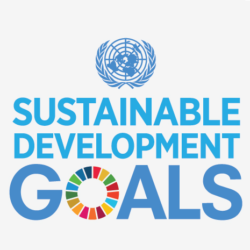
How SDGs Are Fighting Illicit Trade

Last week we looked at two major issues that need solutions if we want to fully achieve the Sustainable Development Goals. They are not, however, the only pressing issue and this other conflict stands as one of humanity’s greatest ills: Illicit trade.
Illicit trade—think human trafficking, product smuggling, theft and counterfeiting—is one of the major problems of our time. It is also standing directly in the way of the Sustainable Development Goals.
This is definitely an issue that cannot be swept under the rug and left for the next generation to solve.
Let’s look at why it’s a problem and what we can do.
Human trafficking really is one of humanity’s greatest evils. The exploitation (and theft in many ways) of human lives for the profit of others is a problem that spans the globe and has entrapped millions of people (24.9 million is the official estimation) in a nightmare situation.
This division of the illicit trade market is obviously not new and in fact can be seen back in our ancient ancient history but that does not mean we should just be accepting it as a part of human nature.
Until human trafficking is solved we can never say we’ve achieved the Sustainable Development Goals.
And I don’t mean this just because target 8.7 says “Take immediate and effective measures to eradicate forced labour, end modern slavery and human trafficking and secure the prohibition and elimination of the worst forms of child labour, including recruitment and use of child soldiers, and by 2025 end child labour in all its forms.” A sustainable world does not include human trafficking.
This is why initiatives like SeraphimGLOBAL are so vital. In order to fight the human trafficking system we need to be prepared and fully knowledgeable about what we’re facing. Using statistical models and the Human Trafficking Research Collaborative (HTRC) SeraphimGLOBAL is amassing the information needed to uncover ways to stop human trafficking.
Human trafficking is not a new problem but modern technology gives us new tools and opportunities to wage war against this horrible problem.
STOP THE TRAFFIK, for example, is using AI to track and analyze the massive amount of data brought in by its worldwide sources. The Traffik Analysis Hub (TAHub) is using that data to try to stop trafficking at its very root. Working with financial institutions, government agencies, law enforcement and NGOs, STOP THE TRAFFIK is making it easier for us to attack trafficking on a global scale—which is vital to finally defeating it.
As well, STOP THE TRAFFIK created the STOP APP to give people the chance to report potential cases of trafficking. By sending a text you could help end a trafficking scheme.
There is no easy way to end human trafficking but technology is giving us the tools we need to limit its presence in the world.
As well as stopping human trafficking we need to stop other forms of trafficking. Money trafficking and smuggling and drug trafficking and smuggling are also doing serious damage to our societies and desperately need viable solutions.
This, of course, plays into goal 16 (Peace, justice and strong institutions) and specifically 16.4 (“By 2030, significantly reduce illicit financial and arms flows, strengthen the recovery and return of stolen assets and combat all forms of organized crime”).
The problem is this illicit trade is an enormous market (over $400 billion a year) and the laws set up to curtail it are not reducing the numbers.
One solution offered is to ensure policy is set up to properly manage the problem. The US recently created the Western Hemisphere Drug Policy Commission in a bid to reduce the damage inflicted by the drug trade in the Americas. Will this new commission successfully work? Well, in 2009 the UN created the Political Declaration and Plan of Action on International Cooperation towards an Integrated and Balanced Strategy to Counter the World Drug Problem. Today, 10 years later, the illicit drug market is still a billion dollar industry.
The answer may be to attack the danger at the other end. Rather than take down the drug trafficking cartel we need to radically reduce the size of the market. Improving treatment options and reducing any stigma or punishment that may come from admitting you’re an addict and seeking help could go a long way in helping those trapped in a drug addiction.
This is an incredibly important and complex problem. I hope we uncover a suitable solution.
Illicit trade is not one of humanity’s good features. The fact that it continues to happen is appalling and is definitely not something we should brush aside as a problem for someone else to fix. Trafficking in all its forms is damaging the lives of people across the globe.
We want the world to be a good place. Ending trafficking worldwide will take cooperation and innovation from every part of the world. It’s a major task but humanity has proven itself capable of doing amazing things before.

